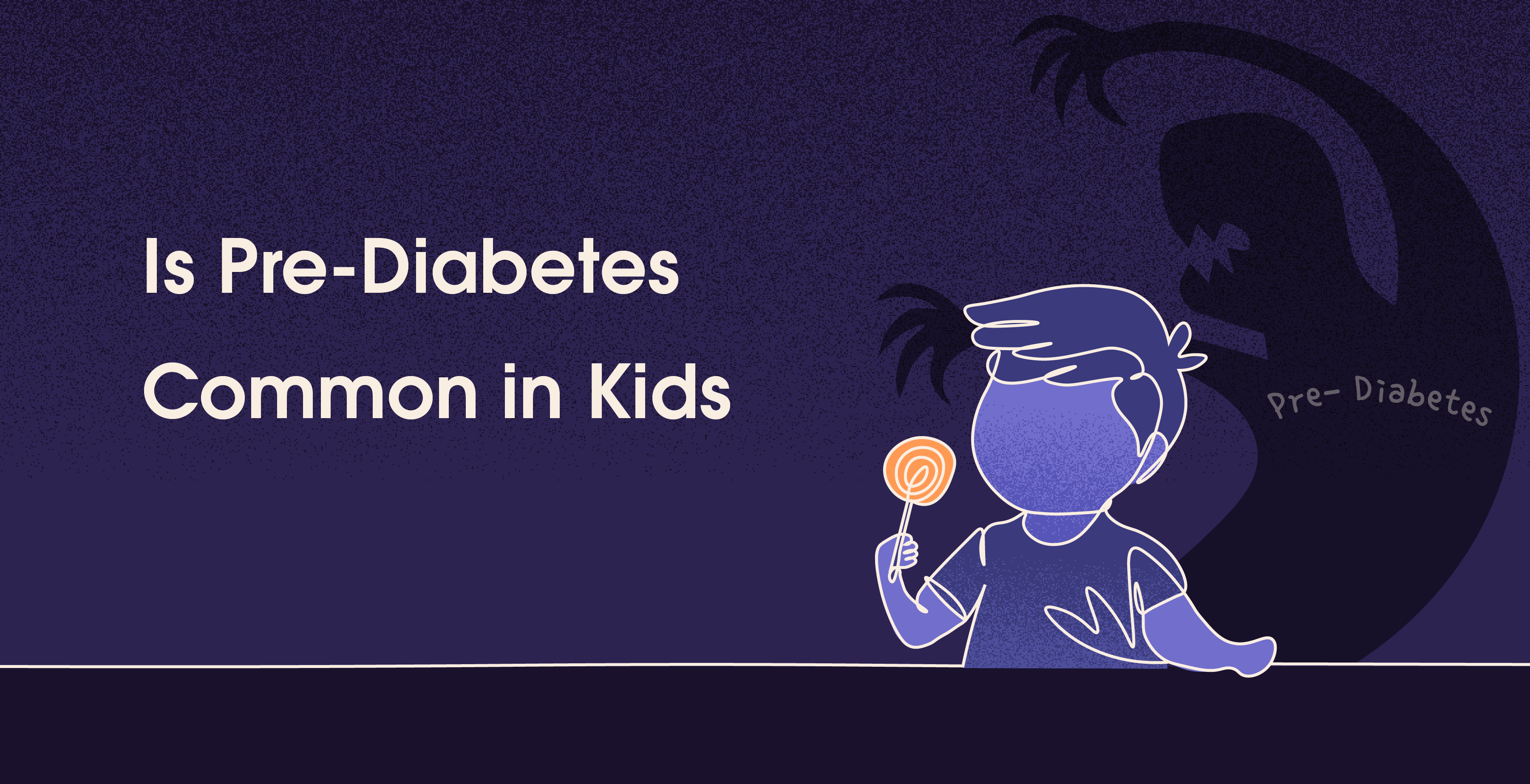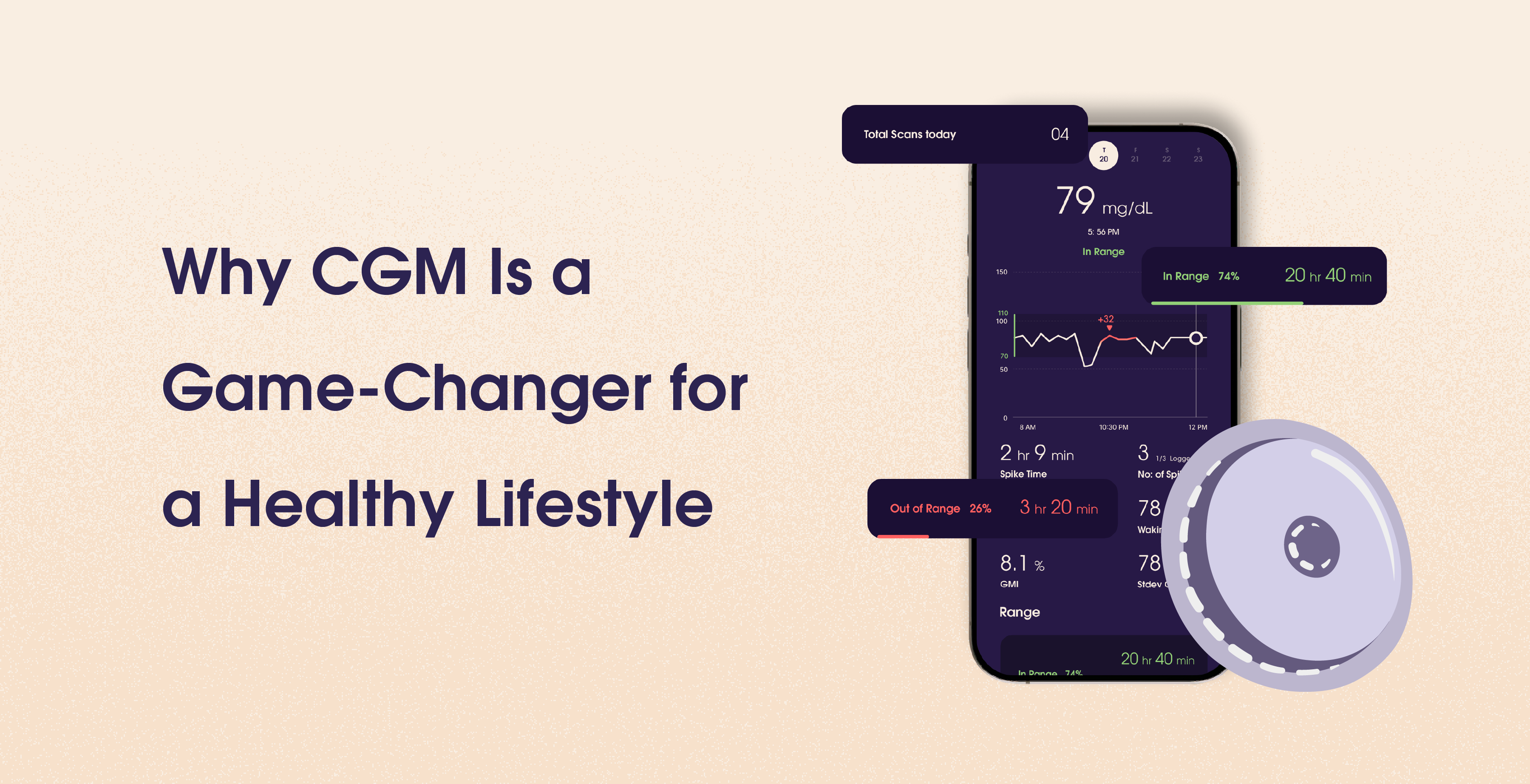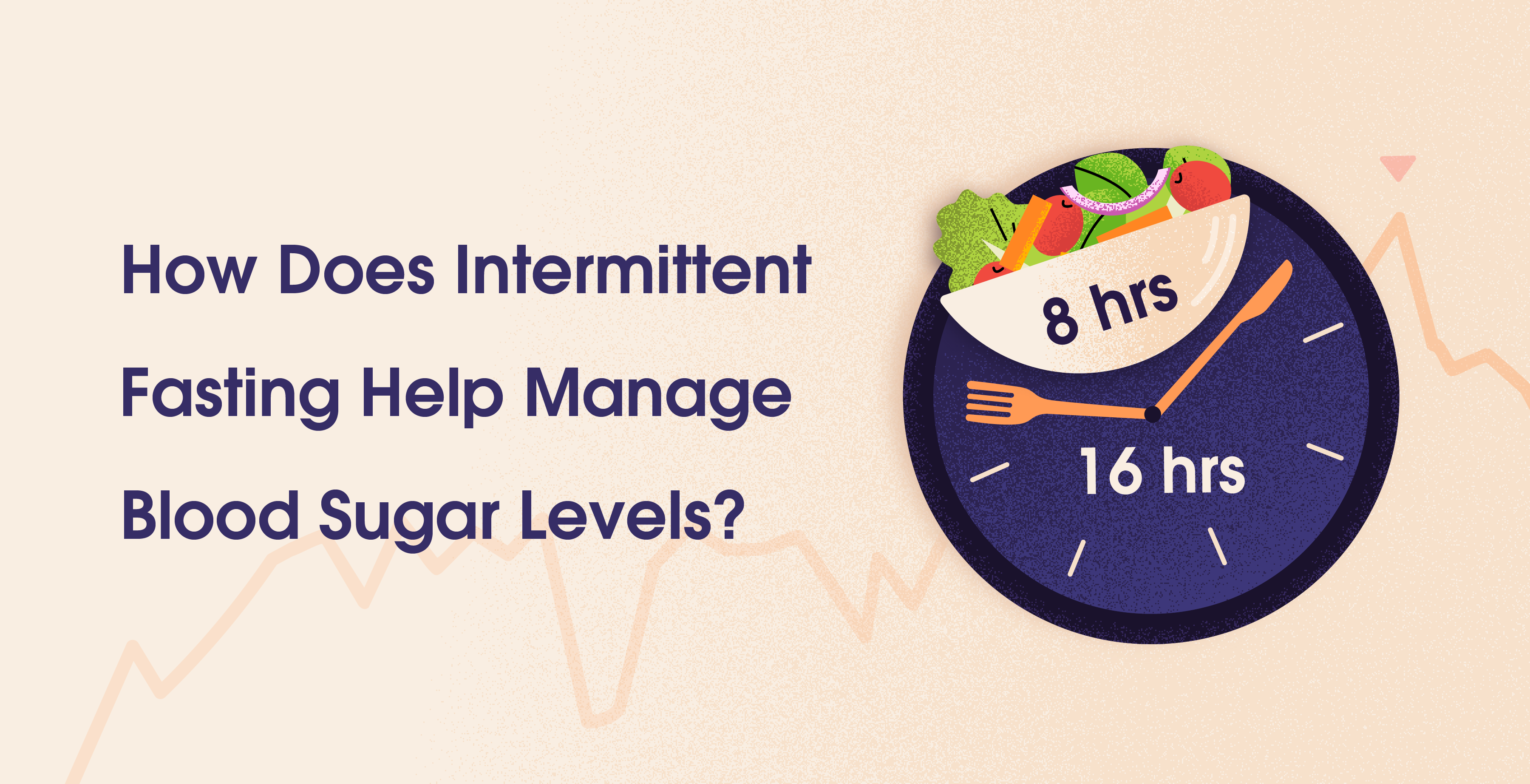Is Pre-Diabetes Common in Kids
Jan 3, 2025
Sayfali Rawlani



Table Of Contents
When we think of health challenges affecting children, conditions like colds, allergies, or maybe even the occasional broken bone come to mind. Rarely does pre-diabetes enter the conversation. Yet, in today’s fast-paced, sugar-laden world, this condition is no longer as rare as we might hope. A growing number of kids are being diagnosed with pre-diabetes, a sobering reminder of how modern lifestyles are shaping the health of our youngest generation.
Highlights
Pre-diabetes is increasingly affecting children due to sedentary lifestyles, processed food consumption, and genetic predispositions.
Symptoms like increased thirst, frequent urination, and fatigue are subtle and often go unnoticed.
Routine health check-ups are crucial for early detection, especially for kids with a family history of diabetes.
Pre-diabetes is reversible with timely action.
Left untreated, it can progress to type 2 diabetes, leading to severe long-term complications.
Integrate fun activities like sports, dance, or family walks.
Replace sugary drinks and snacks with balanced, nutritious options.
Approach health conversations with kids in an empowering, non-punitive way.
Pre-diabetes in children reflects broader societal health trends.
Advocating for better food options in schools and encouraging active lifestyles can create long-term change.
Pre-diabetes is not a definitive fate; it’s an opportunity to reassess and rebuild healthier habits.
Small, consistent changes can help children lead vibrant, healthy lives.
The Surprising Rise of Prediabetes in Children
Pre-diabetes, once considered a stepping stone to type 2 diabetes in adults, is now casting its shadow over children. The reasons? A mix of sedentary habits, processed foods, and genetic predispositions. Kids today are spending more time glued to screens than playing outside, which is one piece of the puzzle. Couple that with diets heavy in sugary snacks and low in nutritious whole foods, and the picture becomes clearer. But it’s not just about lifestyle—there’s a genetic component, too. If a child has a family history of diabetes, their risk of developing pre-diabetes increases significantly.
Still, it’s important to avoid framing this issue solely as a consequence of bad habits. Kids are, after all, a product of their environment. The onus falls just as much on broader societal patterns as on individual choices.
Pre diabetes symptoms in Kids
Spotting pre-diabetes in children isn’t always straightforward. Many parents don’t notice anything until routine blood tests reveal high blood sugar levels. Sometimes, subtle changes like increased thirst, frequent urination, or unexplained fatigue might hint at something deeper. These signs are easy to brush off—after all, what parent doesn’t attribute a cranky mood to growing pains or a long school day?
But here’s the tricky part: pre-diabetes doesn’t always show its cards. It’s often silent, lurking beneath the surface until it develops into full-blown diabetes. This makes regular health check-ups crucial, especially for kids who may be at higher risk.
Why This Matters
The thought of a child grappling with pre-diabetes can feel overwhelming. Childhood is meant to be carefree—a time to run, explore, and grow without worrying about blood sugar levels or dietary restrictions. Yet, early intervention can turn the tide. Pre-diabetes is reversible, and catching it early offers kids a chance to rewrite their health story.
The stakes are higher than they might seem. Left unchecked, pre-diabetes can evolve into type 2 diabetes, which brings a host of complications like heart disease, nerve damage, and kidney issues. More than that, it sets a precedent for lifelong health struggles. Preventing these outcomes begins with understanding the risks and addressing them head-on.
What Can Parents Do?
Raising awareness is a great first step, but what actions can families take? For starters, small, manageable changes often have the most significant impact. Encouraging kids to be more active—whether it’s through team sports, dance classes, or even regular family walks—can make a world of difference. Physical activity doesn’t have to feel like a chore; it can be woven into daily life in creative and enjoyable ways.
Nutrition also plays a pivotal role. Swapping sugary drinks for water or milk, incorporating more vegetables into meals, and reducing processed snacks are excellent starting points. That said, it’s essential to strike a balance. Kids shouldn’t feel deprived or punished when making healthier choices. A little creativity in the kitchen can help—think colorful smoothie bowls or fun, veggie-packed homemade pizzas.
And then there’s the emotional aspect. Talking openly with kids about health—not in a way that scares them, but in a way that empowers them—can create lasting habits. Framing these changes as a family effort rather than a punishment goes a long way in making them feel supported.
Shifting Perspectives
It’s easy to view pre-diabetes as a dark cloud hanging over childhood, but perhaps it’s more constructive to see it as a wake-up call. It’s a chance to reassess what we prioritize as families, schools, and communities. Do we need to revisit what we’re packing in lunchboxes or how we’re structuring recess time? Can we advocate for better food options in cafeterias or more PE classes?
Ultimately, the prevalence of pre-diabetes in kids isn’t just a personal issue; it’s a collective one. It reflects how society values health and how we create environments that support or hinder it. While that might sound like a daunting challenge, it’s also a hopeful one. Small shifts—both at home and in broader systems—can ripple out into meaningful change.
Final Thoughts
Pre-diabetes in kids is not the end of the road. With awareness, action, and a touch of optimism, it’s possible to turn things around. What matters most is catching the condition early, addressing its roots, and ensuring that every child has the opportunity to grow up healthy, vibrant, and full of life. Childhood may look different today than it did a few decades ago, but that doesn’t mean we can’t reclaim it for the better. The power to shape the future—one small step at a time—is entirely in our hands.
References
When we think of health challenges affecting children, conditions like colds, allergies, or maybe even the occasional broken bone come to mind. Rarely does pre-diabetes enter the conversation. Yet, in today’s fast-paced, sugar-laden world, this condition is no longer as rare as we might hope. A growing number of kids are being diagnosed with pre-diabetes, a sobering reminder of how modern lifestyles are shaping the health of our youngest generation.
Highlights
Pre-diabetes is increasingly affecting children due to sedentary lifestyles, processed food consumption, and genetic predispositions.
Symptoms like increased thirst, frequent urination, and fatigue are subtle and often go unnoticed.
Routine health check-ups are crucial for early detection, especially for kids with a family history of diabetes.
Pre-diabetes is reversible with timely action.
Left untreated, it can progress to type 2 diabetes, leading to severe long-term complications.
Integrate fun activities like sports, dance, or family walks.
Replace sugary drinks and snacks with balanced, nutritious options.
Approach health conversations with kids in an empowering, non-punitive way.
Pre-diabetes in children reflects broader societal health trends.
Advocating for better food options in schools and encouraging active lifestyles can create long-term change.
Pre-diabetes is not a definitive fate; it’s an opportunity to reassess and rebuild healthier habits.
Small, consistent changes can help children lead vibrant, healthy lives.
The Surprising Rise of Prediabetes in Children
Pre-diabetes, once considered a stepping stone to type 2 diabetes in adults, is now casting its shadow over children. The reasons? A mix of sedentary habits, processed foods, and genetic predispositions. Kids today are spending more time glued to screens than playing outside, which is one piece of the puzzle. Couple that with diets heavy in sugary snacks and low in nutritious whole foods, and the picture becomes clearer. But it’s not just about lifestyle—there’s a genetic component, too. If a child has a family history of diabetes, their risk of developing pre-diabetes increases significantly.
Still, it’s important to avoid framing this issue solely as a consequence of bad habits. Kids are, after all, a product of their environment. The onus falls just as much on broader societal patterns as on individual choices.
Pre diabetes symptoms in Kids
Spotting pre-diabetes in children isn’t always straightforward. Many parents don’t notice anything until routine blood tests reveal high blood sugar levels. Sometimes, subtle changes like increased thirst, frequent urination, or unexplained fatigue might hint at something deeper. These signs are easy to brush off—after all, what parent doesn’t attribute a cranky mood to growing pains or a long school day?
But here’s the tricky part: pre-diabetes doesn’t always show its cards. It’s often silent, lurking beneath the surface until it develops into full-blown diabetes. This makes regular health check-ups crucial, especially for kids who may be at higher risk.
Why This Matters
The thought of a child grappling with pre-diabetes can feel overwhelming. Childhood is meant to be carefree—a time to run, explore, and grow without worrying about blood sugar levels or dietary restrictions. Yet, early intervention can turn the tide. Pre-diabetes is reversible, and catching it early offers kids a chance to rewrite their health story.
The stakes are higher than they might seem. Left unchecked, pre-diabetes can evolve into type 2 diabetes, which brings a host of complications like heart disease, nerve damage, and kidney issues. More than that, it sets a precedent for lifelong health struggles. Preventing these outcomes begins with understanding the risks and addressing them head-on.
What Can Parents Do?
Raising awareness is a great first step, but what actions can families take? For starters, small, manageable changes often have the most significant impact. Encouraging kids to be more active—whether it’s through team sports, dance classes, or even regular family walks—can make a world of difference. Physical activity doesn’t have to feel like a chore; it can be woven into daily life in creative and enjoyable ways.
Nutrition also plays a pivotal role. Swapping sugary drinks for water or milk, incorporating more vegetables into meals, and reducing processed snacks are excellent starting points. That said, it’s essential to strike a balance. Kids shouldn’t feel deprived or punished when making healthier choices. A little creativity in the kitchen can help—think colorful smoothie bowls or fun, veggie-packed homemade pizzas.
And then there’s the emotional aspect. Talking openly with kids about health—not in a way that scares them, but in a way that empowers them—can create lasting habits. Framing these changes as a family effort rather than a punishment goes a long way in making them feel supported.
Shifting Perspectives
It’s easy to view pre-diabetes as a dark cloud hanging over childhood, but perhaps it’s more constructive to see it as a wake-up call. It’s a chance to reassess what we prioritize as families, schools, and communities. Do we need to revisit what we’re packing in lunchboxes or how we’re structuring recess time? Can we advocate for better food options in cafeterias or more PE classes?
Ultimately, the prevalence of pre-diabetes in kids isn’t just a personal issue; it’s a collective one. It reflects how society values health and how we create environments that support or hinder it. While that might sound like a daunting challenge, it’s also a hopeful one. Small shifts—both at home and in broader systems—can ripple out into meaningful change.
Final Thoughts
Pre-diabetes in kids is not the end of the road. With awareness, action, and a touch of optimism, it’s possible to turn things around. What matters most is catching the condition early, addressing its roots, and ensuring that every child has the opportunity to grow up healthy, vibrant, and full of life. Childhood may look different today than it did a few decades ago, but that doesn’t mean we can’t reclaim it for the better. The power to shape the future—one small step at a time—is entirely in our hands.
References
Table Of Contents
Table Of Contents
Table Of Contents
Read More


Mar 25, 2025
Sayfali Rawlani


Mar 20, 2025
Sayfali Rawlani


Mar 6, 2025
Sayfali Rawlani



Company
Copyright © 2025 trst health. All right reserved.

